Introduction
The SaTScan Software
Purpose
Data Types and Methods
Developers and Funders
Download and Installation
Test Run
Sample Data Sets
Discrete Poisson Model, Space-Time and Spatial Variation in Temporal Trends: Brain Cancer Incidence in New Mexico
Bernoulli Model, Purely Spatial : Childhood Leukemia and Lymphoma Incidence in North Humberside
Space-Time Permutation Model: Hospital Emergency Room Admissions Due to Fever at New York City Hospitals
Multinomial and Ordinal Model, Purely Spatial: Education Attainment Levels in Maryland
Exponential Model, Space-Time : Artificially Created Survival Data
Normal Model, Purely Spatial : Artificially Created Continuous Data
Statistical Methodology
Spatial, Temporal and Space-Time Scan Statistics
Spatial Scan Statistic
Space-Time Scan Statistic
Temporal Scan Statistic
Bernoulli Model
Discrete Poisson Model
Space-Time Permutation Model
Multinomial Model
Ordinal Model
Exponential Model
Normal Model
Continuous Poisson Model
Probability Model Comparison
Few Cases Compared to Controls
Bernoulli versus Ordinal Model
Normal versus Exponential Model
Normal versus Ordinal Model
Discrete versus Homogeneous Poisson Model
Temporal Data
Likelihood Ratio Test
Non-Compactness Penalty Function
Secondary Clusters
Adjusting for More Likely Clusters
Covariate Adjustments
Covariate Adjustment Using the Input Files
E[c] = p*C/P
Covariate Adjustment Using Statistical Regression Software
Covariate Adjustment Using Multiple Data Sets
Spatial and Temporal Adjustments
Adjusting for Temporal Trends
Adjusting for Purely Spatial Clusters
Adjusting for Known Relative Risks
Missing Data
Bernoulli Model
Multinomial and Ordinal Models
Discrete Poisson Model
Continuous Poisson Model
Space-Time Permutation Model
Multivariate Scan with Multiple Data Sets
Comparison with Other Methods
Scan Statistics
Spatial and Space-Time Clustering
Descriptive Cluster Detection Methods
Cluster Detection Tests
Focused Cluster Tests
Global Clustering Tests
Global Space-Time Interaction Tests
Input Data
Data Requirements
Case File
Control File
Population File
Coordinates File
Cartesian Coordinates
Latitude and Longitude
Grid File
Non-Euclidian Neighbors File
Meta Location File
Max Circle Size File
Adjustments File
SaTScan Import Wizard
Step 1 – Selecting the Source File
Step 2: Specifying the File Format
Step 3: Matching Source File Variables with SaTScan Variables
Step 4: Saving the Imported File
SaTScan ASCII File Format
Time Formats
Basic SaTScan Features
Input Tab
Case File Name
Control File Name
Time Precision
Study Period
Population File Name
Coordinates File Name
Grid File Name
Coordinates
Analysis Tab
Type of Analysis
Probability Model
Discrete Poisson Model: The discrete Poisson model should be used when the background population reflects a certain risk mass such as total person years lived in an area. The cases are then included as part of the population count.
Continuous Poisson Model: The continuous Poisson model should be used when the null hypothesis is that observations are distributed randomly with constant intensity according to a homogeneous Poisson process over a user defined study area.
Polygons for the Continuous Poisson Model
Scan for High or Low Rates
Time Aggregation
Output Tab
Results File Name
Additional Output Files
Advanced Features
Multiple Data Sets Tab
Data Checking Tab
Temporal Data Check
Geographical Data Check
Neighbors Tab
Non-Euclidian Neighbors File
Meta Location File
Multiple Coordinates per Location
Spatial Window Tab
Maximum Spatial Cluster Size
Include Purely Temporal Clusters
Elliptic Scanning Window
Isotonic Spatial Scan Statistic
Temporal Window Tab
Maximum Temporal Cluster Size
Include Purely Spatial Clusters
Flexible Temporal Window Definition
Spatial and Temporal Adjustments Tab
Temporal Trend Adjustment
Spatial Adjustment
Adjustment with Known Relative Risks
Inference Tab
P-Value
Adjust for Earlier Analyses in Prospective Surveillance
Iterative Scan Statistic
Clusters Reported Tab
Criteria for Reporting Secondary Clusters
Maximum Reported Spatial Cluster Size
Additional Output Tab
Critical Values
Monte Carlo Rank
Column Headers
Running SaTScan
Specifying Analysis and Data Options
Launching the Analysis
Status Messages
Warnings and Errors
Warning Messages
Error Messages
Saving Analysis Parameters
To save analysis parameters
To open a saved parameter file
Parallel Processors
Batch Mode
Computing Time
Single Data Set
Multiple Data Sets
Memory Requirements
Standard Memory Allocation
Special Memory Allocation
Insufficient Memory
Results of Analysis
Standard Results File (*.out.*)
Cluster Information File (*.col.*)
Stratified Cluster Information File (*.sci.*)
Location Information File (*.gis.*)
Risk Estimates for Each Location File (*.rr.*)
Simulated Log Likelihood Ratios File (*.llr.*)
Miscellaneous
New Versions
Analysis History File
Random Number Generator
Contact Us
Acknowledgements
Financial Support
Comments and Suggestions
Frequently Asked Questions
Input Data
Analysis
Results
Interpretation
Operating Systems
SaTScan Bibliography
Suggested Citations
SaTScan Methodology Papers
Statistical Methodology
Normal Model
Adjustments
Adjusting for Covariates
Iterative Scan Statistics, Adjusting for More Likely Clusters
Computational Aspects
Algorithms
Random Number Generator
Macros
Visualization and Mapping
Methods Evaluations and Comparisons
Selected SaTScan Applications by Field of Study
Infectious Diseases
Parasitology
Syndromic Surveillance
Cancer
Cardiology
Rheumatology / Auto-Immune Diseases
Liver Diseases
Diabetes
Allergy and Asthma
Birth Defects and Other Congenital Outcomes
Pediatrics
Geriatrics
Neurological Diseases
Psychology
Brain Imaging
Alcohol and Drugs
Accidents and Suicide
Demography
Veterinary Medicine, Domestic Animals
Veterinary Medicine, Wildlife
Entomology
Ichthyology
Botany
Forestry
Ecology and the Environment
Natural and Human Disasters
Criminology
Transportation
History
Astronomy
Other References Mentioned in the User Guide
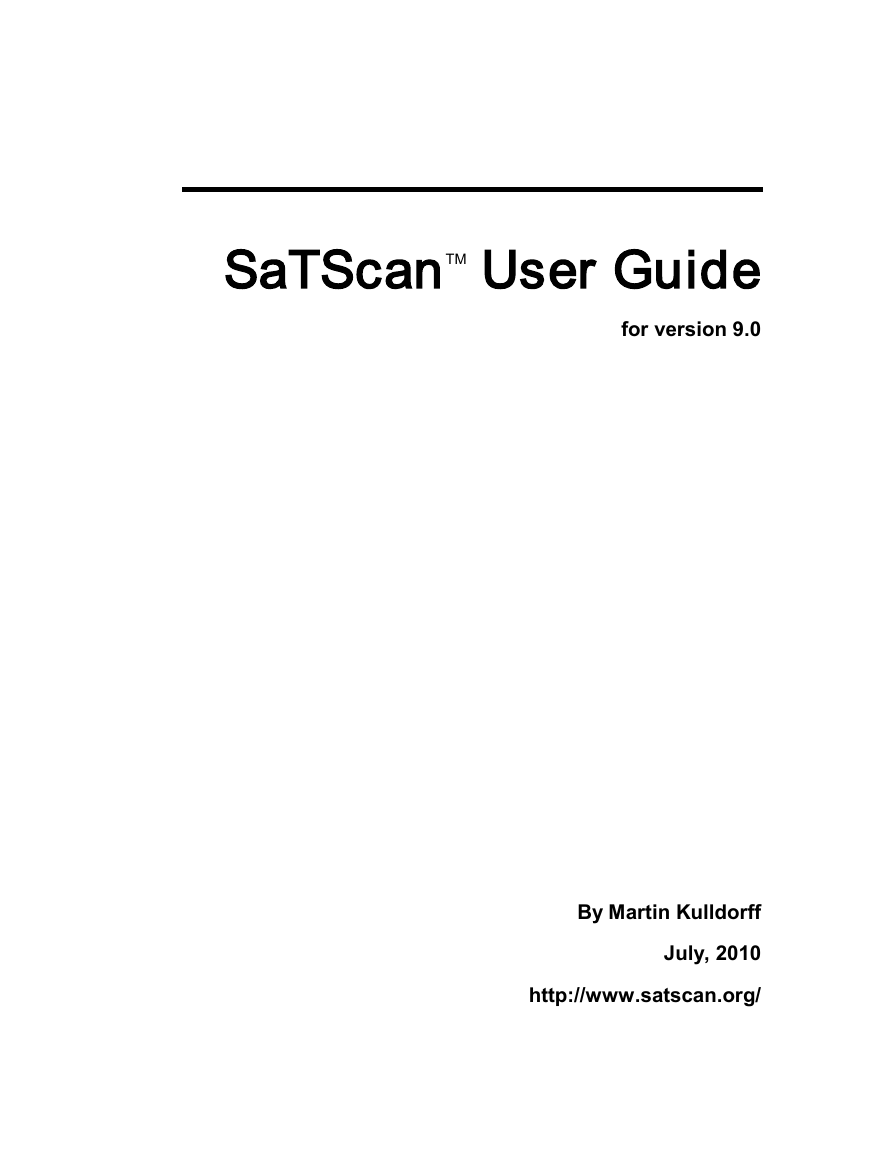
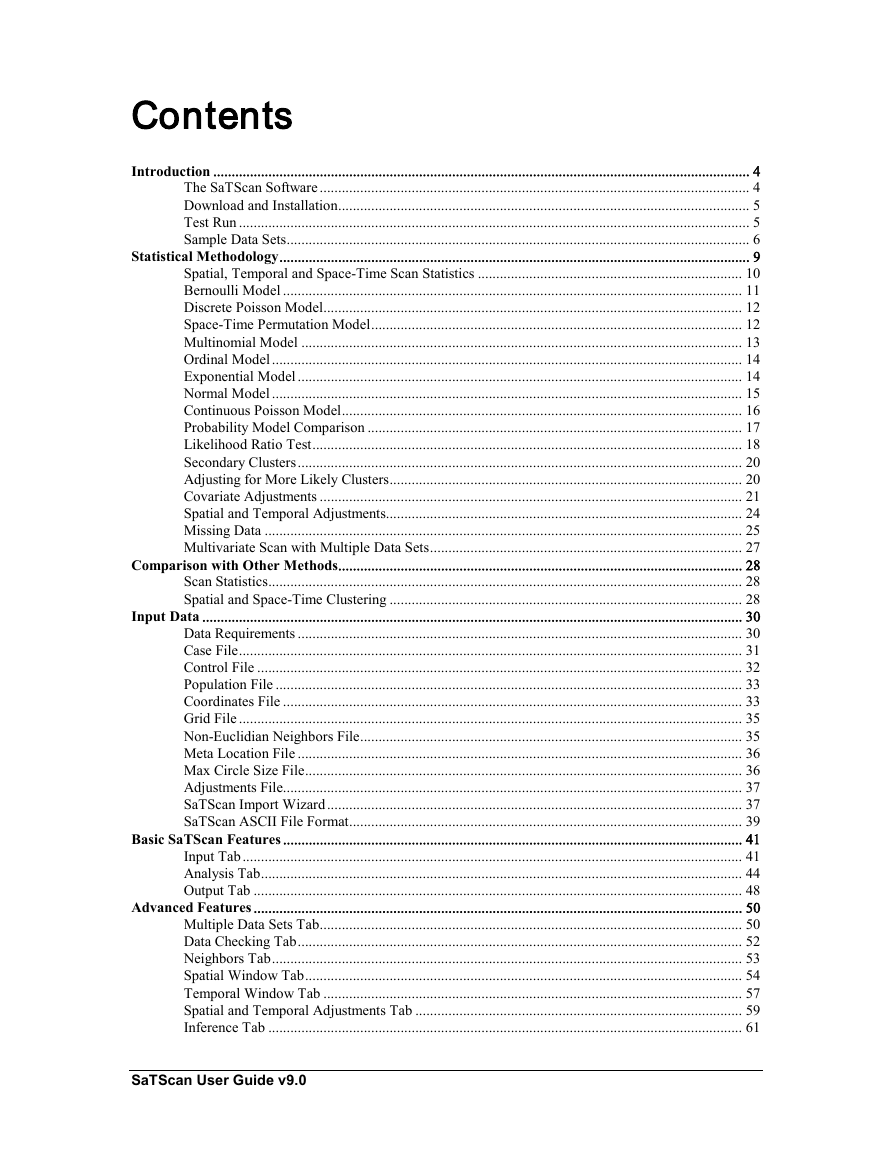


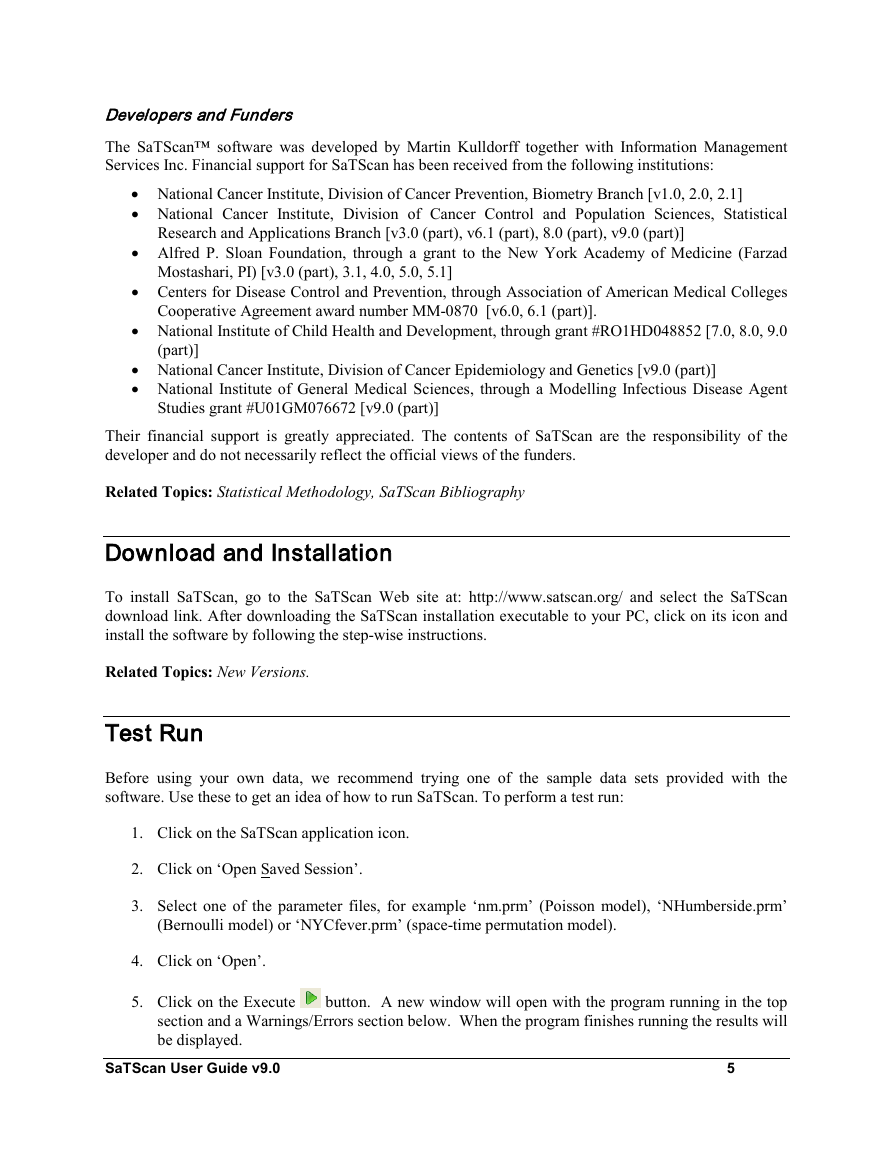
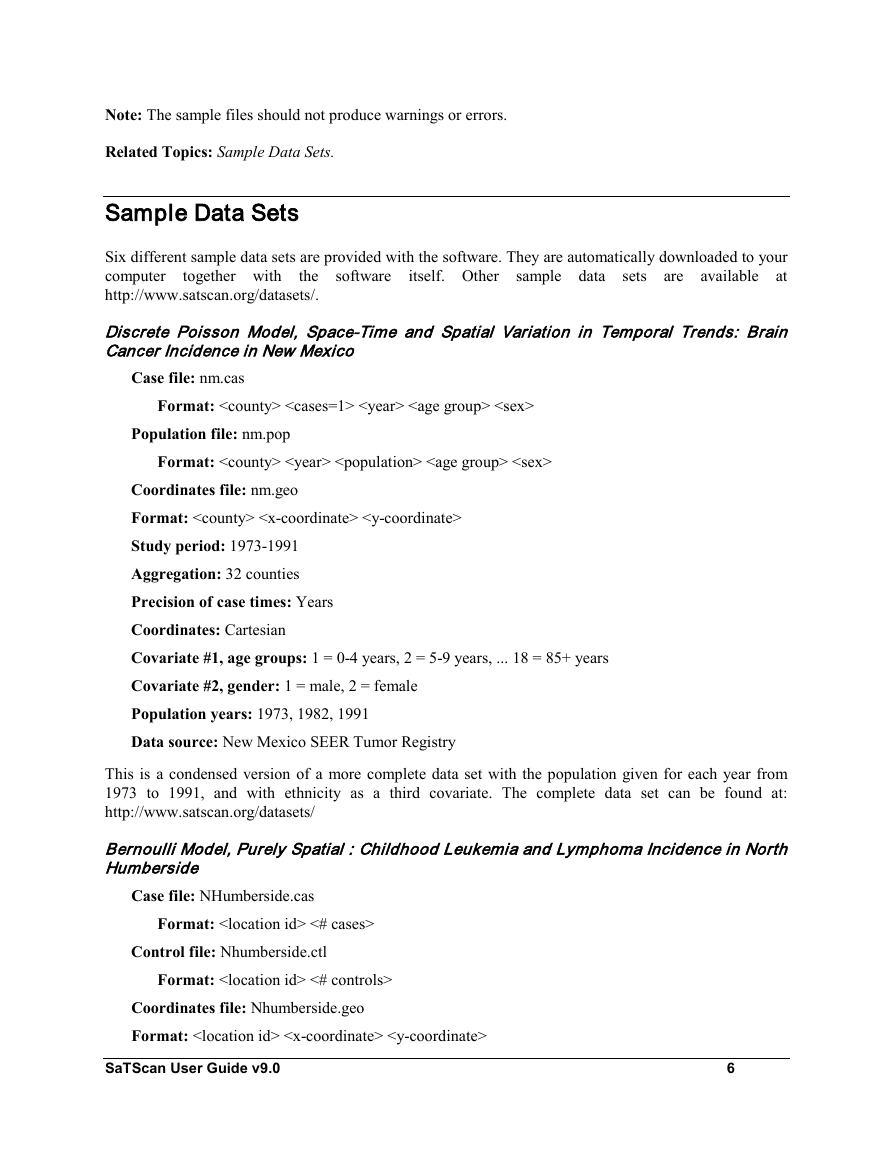

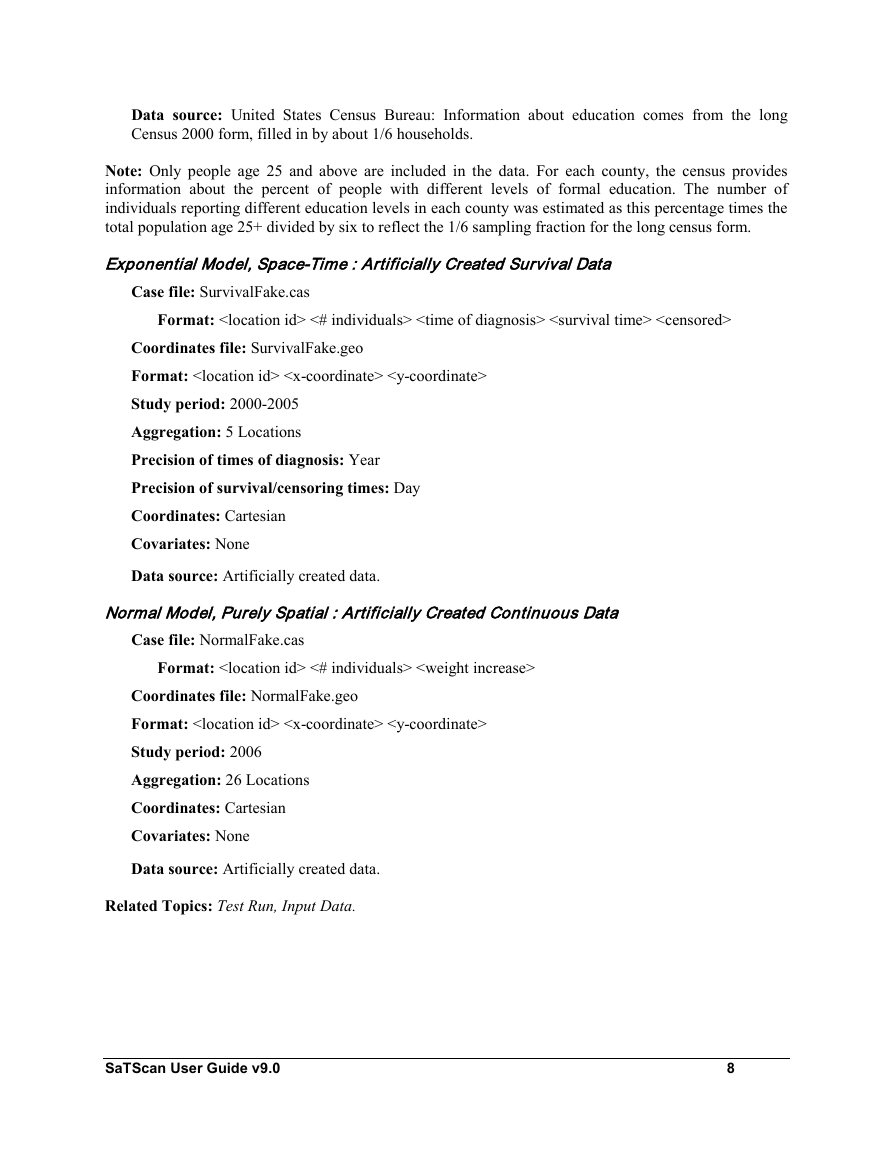








 2023年江西萍乡中考道德与法治真题及答案.doc
2023年江西萍乡中考道德与法治真题及答案.doc 2012年重庆南川中考生物真题及答案.doc
2012年重庆南川中考生物真题及答案.doc 2013年江西师范大学地理学综合及文艺理论基础考研真题.doc
2013年江西师范大学地理学综合及文艺理论基础考研真题.doc 2020年四川甘孜小升初语文真题及答案I卷.doc
2020年四川甘孜小升初语文真题及答案I卷.doc 2020年注册岩土工程师专业基础考试真题及答案.doc
2020年注册岩土工程师专业基础考试真题及答案.doc 2023-2024学年福建省厦门市九年级上学期数学月考试题及答案.doc
2023-2024学年福建省厦门市九年级上学期数学月考试题及答案.doc 2021-2022学年辽宁省沈阳市大东区九年级上学期语文期末试题及答案.doc
2021-2022学年辽宁省沈阳市大东区九年级上学期语文期末试题及答案.doc 2022-2023学年北京东城区初三第一学期物理期末试卷及答案.doc
2022-2023学年北京东城区初三第一学期物理期末试卷及答案.doc 2018上半年江西教师资格初中地理学科知识与教学能力真题及答案.doc
2018上半年江西教师资格初中地理学科知识与教学能力真题及答案.doc 2012年河北国家公务员申论考试真题及答案-省级.doc
2012年河北国家公务员申论考试真题及答案-省级.doc 2020-2021学年江苏省扬州市江都区邵樊片九年级上学期数学第一次质量检测试题及答案.doc
2020-2021学年江苏省扬州市江都区邵樊片九年级上学期数学第一次质量检测试题及答案.doc 2022下半年黑龙江教师资格证中学综合素质真题及答案.doc
2022下半年黑龙江教师资格证中学综合素质真题及答案.doc